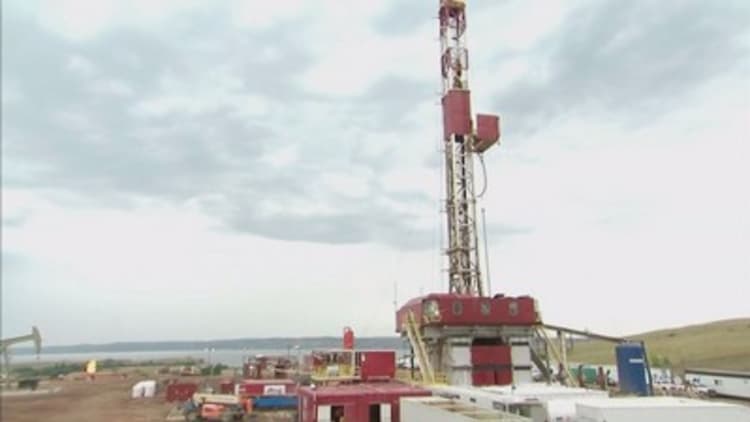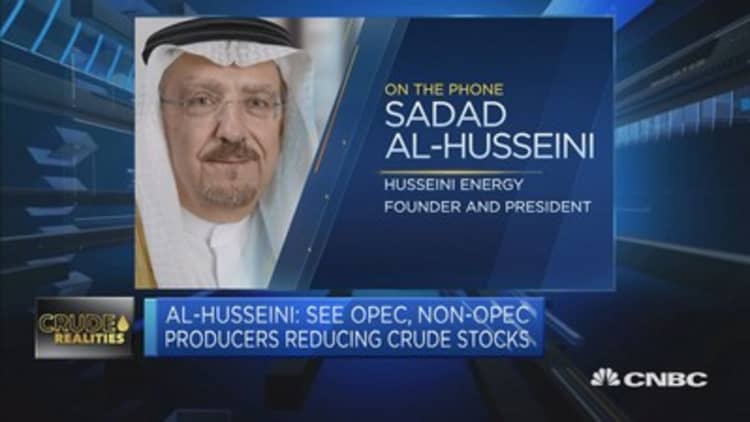Oil prices fell more than a dollar on Monday, with U.S. crude easing from two-year highs on prospects of higher supply, and uncertainty about Russia's resolve to join in extending output cuts ahead of this week's OPEC meeting.
U.S. light crude fell as low as $57.55 a barrel during the session, before recovering some ground to end Monday's session down 84 cents, or 1.4 percent, at $58.11.
Benchmark Brent crude oil was up 9 cents at $63.95 a barrel by 2:25 p.m. ET (1925 GMT). It touched an session low of $62.70.
Oil prices have risen sharply in recent months due to output cuts by the Organization of the Petroleum Exporting Countries, Russia and other producers. However, higher prices have encouraged greater output among U.S. producers.

U.S. crude oil production has risen by 15 percent since mid-2016 to 9.66 million barrels per day (bpd), not far from top producers Russia and Saudi Arabia, and increasing drilling activity for new production means output is likely to grow further.
U.S. energy companies last week added oil rigs, with the monthly rig count increasing for the first time since July, to 747 active rigs, as producers are attracted by rising crude prices.
U.S. crude oil touched $59.05 a barrel on Friday, its strongest since mid-2015, partly driven by the closure of the 590,000 bpd Keystone pipeline connecting Canada's oil sand fields with the United States following a spill, which reduced stocks.
U.S. crude slightly extended losses after the settle as TransCanada said it will restart its Keystone crude oil pipeline at reduced pressure on Tuesday after getting approval from U.S. regulators.
OPEC and its allies cut production by 1.8 million bpd in January and have agreed to hold down output until March. OPEC meets on Thursday to discuss policy and most analysts expect a deal to extend the cuts.
On Friday, Russia said it was ready to support extending an output cut deal. Still, Russia has not given a timeline for extending output cuts, and on Monday there were signs Russia may find it hard to comply.

Oil output from Russia's Sakhalin-1 project is set to rise by about a quarter to 250,000-260,000 barrels per day (bpd) from January, sources with knowledge of the plan said.
"It's the OPEC parlor game that we're all playing," said John Kilduff, partner at Again Capital LLC in New York, "The Russians being quiet about their intentions about the OPEC deal is a little unsettling."
Analysts at Barclays also expect OPEC to keep output limits for another six or nine months, but said this so widely forecast that there was a risk prices could fall after the OPEC meeting.
"This week, we expect volatile prices as market participants shed length," Barclays said in a note to clients. "Prices might fall in the immediate aftermath of the deal as speculative length 'sells the news'. Still, fundamentals should keep Brent at an average of $60 a barrel this quarter."
"There is plenty of room for disappointment," said Harry Tchilinguirian, head of oil strategy at French bank BNP Paribas.
"Should the outcome of the next OPEC meeting fall short of expectations, the large net-long speculative position on oil futures can unwind, sending prices lower and volatility higher."
— CNBC's Tom DiChristopher contributed to this report.

